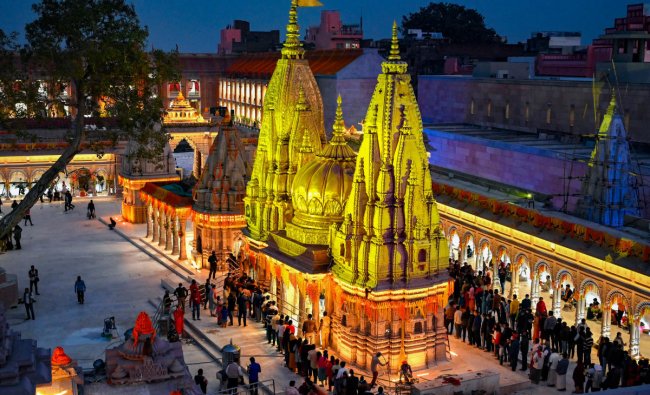Varanasi Kashi Vishwanath (Jyotirlinga) Temple – Uttar Pradesh

Address
Varanasi Kashi Vishwanath Temple, Lahori Tola, Varanasi, Uttar Pradesh 221001
Deity
Vishveshvur or Vishwanath, Amman: Visalatchi
Introduction
- Location: Vishwanath Gali, Varanasi, Uttar Pradesh, India.
- Dedicated to: Lord Shiva, also known as Shri Vishwanath and Vishweshwara (Lord of the Universe).
- Significance: One of the twelve Jyotirlingas, which are the holiest Shiva temples.
- Historical Context: Varanasi, once called Kashi (meaning “shining”), is the city where the temple stands.
- Etymology: Vishveshvara means “Lord of the Universe” (Vishva: Universe, Ishvara: Lord).
Puranic Significance
- Ancient Worship: The temple has been central to Shaiva worship and referred to in Hindu scriptures.
- Historical Destruction: The temple was destroyed several times, including by Aurangzeb, who built the Gyanvapi Mosque on its site.
- Current Structure: Rebuilt by Maratha ruler Ahilya Bai Holkar in 1780.
- Mythological Story:
- In the Shiva Purana, Brahma and Vishnu argue about supremacy. Shiva tested them by manifesting as a fiery pillar (Jyotirlinga). Vishnu admitted defeat, while Brahma lied, leading to Shiva cursing Brahma.
- The jyotirlinga symbolizes Shiva’s supreme and formless reality.
- The Kashi Vishwanath Temple is a significant jyotirlinga site, one of twelve, each representing a different manifestation of Shiva.
Special Features
- Temple Complex: The temple includes smaller shrines in the Vishwanatha Galli, near the Ganges.
- Main Deity’s Linga: The main linga is 60 cm tall and 90 cm in circumference, placed on a silver altar.
- Additional Shrines: The complex has temples dedicated to Kala Bhairava, Kartikeya, Avimukteshwara, Vishnu, Ganesha, Shani, Shiva, and Parvati.
- Jnana Vapi Well: A well north of the temple that protected the jyotirlinga during Mughal invasions.
- Structure: The temple has three main parts: a spire, a gold dome, and a gold spire on the sanctum, topped with a flag and trident.
- Gold Domes: The temple features three gold domes, donated by Maharaja Ranjit Singh in 1835.
- Visitor Numbers: The temple attracts around 3,000 visitors daily, with numbers reaching up to 1,000,000 during major occasions.
Festivals
Mahashivrathri
Century/Period/Age
5000 years old
Managed By
Kasi Viswanath Temple Trust
Nearest Bus Station
Varanasi
Nearest Railway Station
Varanasi
Nearest Airport
Varanasi






